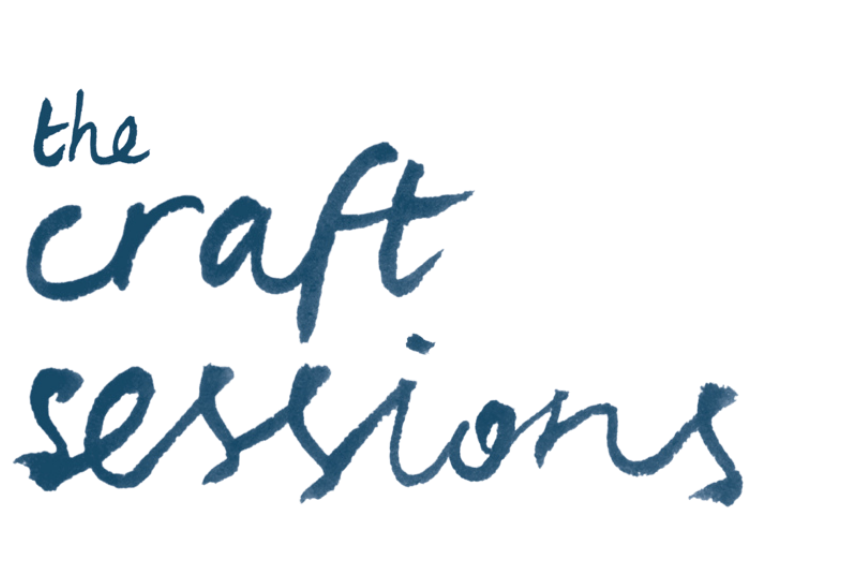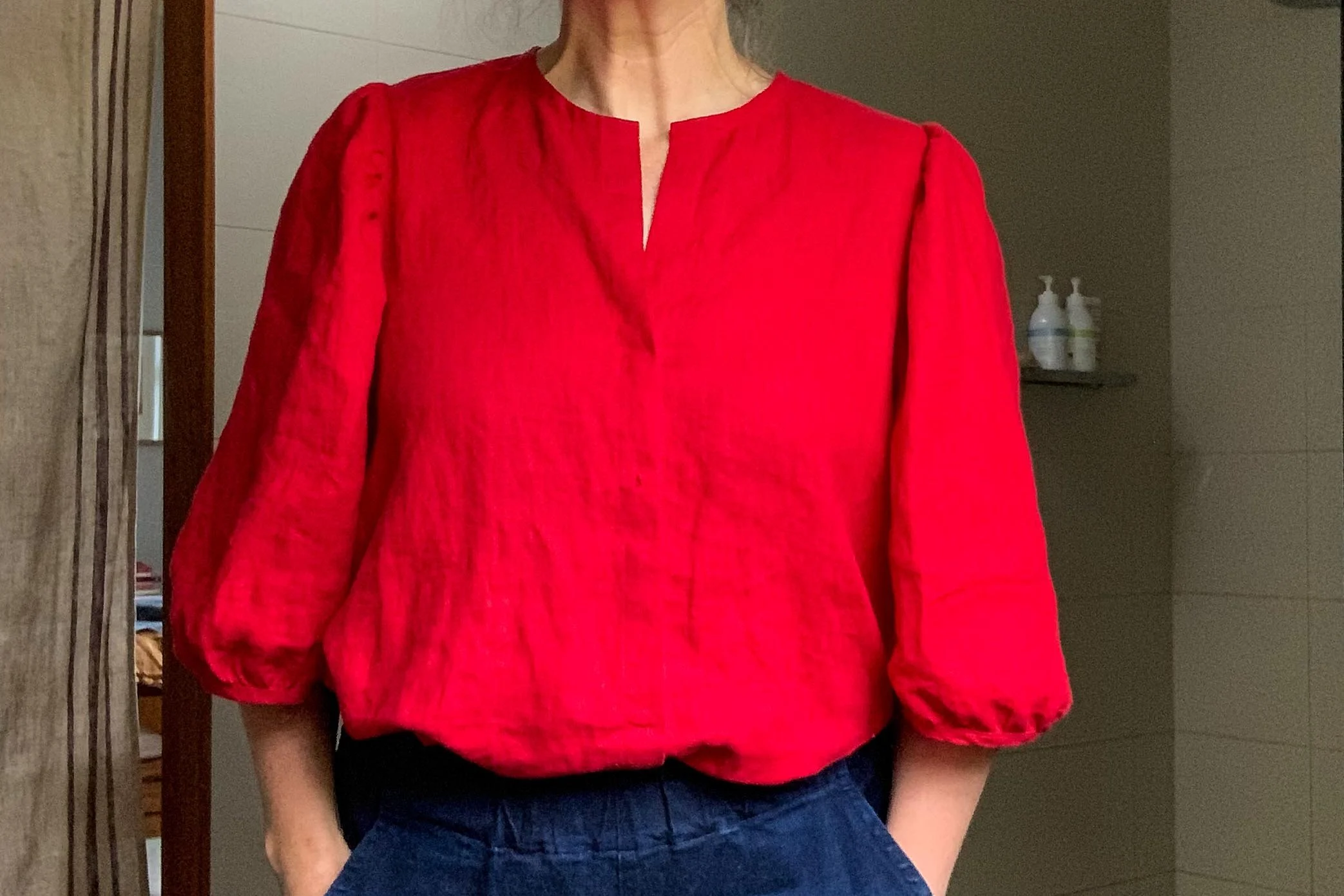Craft is a process that isn’t simply a straight line from materials to object, but rather it is an energetic feedback loop that cycles through the life-elevating process that is hand making. Making making us feel good, leading to more making that makes us feel good, regardless of whether in this moment that making is physical. Our craft practice acting as a virtuous cycle* - an ongoing process of engagement with the parts of me that feel most like me. Making begetting more making, leading to well-being begetting more well-being.
Read MoreStudy The Masters
This quilt for my daughter was made based on a beautiful Folk Fibers quilt. I’ll talk a bit more about it below.
As I get even more conscious and mindful about decreasing the resources I use - which means increasing the percentage of scrap projects I engage with - study has been essential to me learning to make the things that I want to make in a way that makes my heart sing. Because scrap projects, while fun, are not something I find easy to engage with.
Scrap projects are all about getting our materials - the textures and the colours - to work together in a cohesive, and hopefully beautiful, way….
Read MoreThe Tension Of Embracing Good Enough
So much of life is tension. Tension between the things we think we want in the moment, and what will fulfill us in the longer term. Tension between competing values that are incongruent, but feel equally important. Like freedom and discipline; two ideas that I struggle with on an ongoing basis. Or as in the case in this post, between the perfect thing and good enough.
Read MoreCraft As Becoming
In each moment we are becoming something.
Always. In each moment, becoming is happening to us and through us; happening through the choices and non-choices we make about how we spend our moments.
We are always learning, growing and changing in each moment, even if that change is simply us becoming more of the same, our character becoming more ingrained by us being as we ever were. This being is still a form of becoming. Always.
Read MoreTackling The Fringe KAL - Part 1
Karen is running the Fringe and Friends KAL again this year and for the first time it is something I can jump in on. I love her Knit Alongs - we as a community of knitters all learn so much from watching one another's process, don't we. And who doesn't love learning new things?!?
For me, I'm using a bit of a different process for this one, as it is all about experimentation. I'm trying not to plan too much and really just trust that the sweater will reveal itself to me as we go.
This could be a to-tal-ly nuts idea. We will see, however as we know from my past posts about Ripping with Joy then part of the reason we knit is that we love knitting. So if it doesn't work I'm just going to rip that sucker. And then I will knit some more.
What I'm loving is that Karen's KAL has created a space that encourages me to experiment. And sometimes in this busy busy world full of chores, we need spaces that encourage us to play. So fun.
I've made many a top-down improvised yoke using raglan shaping in my time, so I wanted to up the ante a little.
Inspired by patterns like Cline and this little beauty here on Pinterest I thought I would try something that had a more pointed sleeve, that was maybe drop shouldered and also included maybe a bit more of a boat neck or a funnel neck AND had visible lines along the shoulder shaping.
Or there was this and this and this and this.
I also have this idea - based on a sweater I improvised for my middle kid years ago - that used this funny shoulder shaping that meant there wasn't enough sweater fabric at the shoulder point. This happened because I only increased on the body and not on the shoulder. I like the effect it creates as it slightly stretches the fabric at the shoulder point. I'm gunna try to do that again. I want to distort the fabric.
You can vaguely see the slight distortion as it heads towards the shoulder. As she got older and the sweater got smaller this effect increased.
I started by knitting this swatch in some yarn I had purchased originally to knit Cline. I thought I would try a bit of the rib and then also try different types of increases to see which one was cleanest in this particular yarn.
I tried
1. a m1 ala Elizabeth Zimmerman
2. a kfb
3. a m1L and m1R
4. a invisible increase that involves knitting into the stitch on the row below from a Jared Flood pattern.
....and really I wasn't that fond of any of them.
As I was knitting my yarn at a different gauge than it was intended for - it's recommended gauge was 22/4" on a 4mm and I was knitting it at 19s/4" on a 4.5mm - then nearly every increase distorted the line of the rib shoulder I was planning by pulling a stitch tight on every increase row. This makes sense as methods 2-4 above all involve taking a stitch that already exists, and using the yarn in that stitch to make the new stitch. Therefore you are making two stitches from one which pulls the yarn tight and distorts the nice neat line of stitches I had in my rib shoulder.
The only option for something clean that worked was the first one - the M1. The way I was doing Jared's increase didn't distort the actual line of stitching but did distort the stitch next to it....which still mucked up my nice clean line.
Why did I care so much? What's a little distortion here and there. Well I wanted the lines to be super clean. And as I didn't plan on increasing on every single RS row then the irregular nature of the increases would make it look wacky. So M1 it is.
To avoid the small holes I was getting from my M1 I might try to twist them even further by knitting through the back of the stitch. Time will tell.
OK. So the swatch is done, increases picked, gauge measured.
And I've cast on.
Next up.... some more about my pattern shape and my measurements.
Yay Karen!
Are you joining in? There is still time!!
Felicia x









